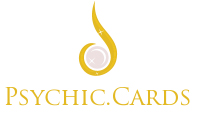It’s initially scary to get the death card, and one of the most common questions in the entire study of the Tarot is, “Does the Death card mean real physical death?”
Yes, Death can mean a person’s “death.” But, more to the point, the Death card talks about endings, and the end of life is only one form of ending.
The most valuable thing to remember about the Death card is that it does not always convey the end of a human life. Actually, chances are better that it refers to some sort of passing, perhaps of a goldfish or cherished houseplant.
The “Death” of Anything
The Death card can refer to the “end” of anything: the closing of your favorite eating place, the end of an era, the conclusion of an unusually difficult workweek. It can be one of the millions of potential interpretations. It would be foolish to live in fear that the Death card will occasionally tell you of a sick, elderly relative that may not be around much longer.
The most powerful lesson of the Death card in a reading: it is less about physical death and more about how the seeker copes with endings.
We might be relieved that a solution is approaching. Finally, as a hated job ends, the path opens to a new career. But, on the other hand, perhaps we will be saddened, as in the loss of that doomed goldfish. In any case, we need time to adjust to the fact that something comfortable will no longer be a part of our lives.
The star sign of the Death card is Scorpio, a sign more about transformation than an actual loss. Scorpio appears in three distinct forms: a scorpion, snake, and eagle. The Death card can refer to the progress from lower to higher, then highest.
Scorpio also speaks of sexuality. When the Universe takes from us, it provides something in return. As the saying goes, “When a door closes, a window opens.”
The thing entering our lives may not be the same as what has left, but it tries to fill the space, giving us the inspiration to carry on.
Ruminations on the Death Card
Death and sex relate closely in Scorpio, as it is the star sign that stands for both. This connection hints at the real meaning of the Death card. Western cultures often view “Death” with fear because they see Death as an end—or THE end—and they simply hate the end of anything.
Other cultures view Death as a natural and necessary part of life. Death is a part of the enduring cycle of existence. In the karmic traditions, karma dictates that you must die to be reborn.
Winter leads to spring, and to appreciate the new, we have to face loss. These things are the essence of the Death car. It reminds us of the inevitability of change.
Before the change occurs, even as change is happening, the seeker needs a chance to grieve, mourn and weep. Death is the consummate equalizer and humbles us all. Yet, it is all a part of life.
The grieving process is necessary because it gives us the inner space for something new, different, and fresh to enter our lives. This time may also be something that could revitalize, restore, or transform us.
The Death card tells the seeker there will be a time for grief and grieving, but it is not forever. Nothing is. The darkness of despair will always result in a sunrise, a newborn reality rising from the ashes of the past.
The Death card is not something to fear in the majority of circumstances, so take a breath and review the rest of your reading to learn the full story.


I appreciate how the article demystifies the Death card, showing it as a signal for change rather than an omen of physical demise. This perspective can certainly help in alleviating the anxiety often associated with this card.
It’s intriguing to see how the Death card is tied to the natural cycle of life, death, and rebirth, aligning with various cultural beliefs about the necessity of endings. This holistic view can offer comfort and clarity during times of transition.
The link drawn between the Death card and the grieving process is insightful. Understanding that grief creates space for new beginnings can be a profound takeaway for those navigating personal losses.
Indeed, the notion that grieving is essential for transformation can offer solace. It implies that the pain of endings is not only natural but necessary for personal growth and renewal.
The discussion on the correlation between the Death card and Scorpio’s transformative qualities is compelling. The notion that endings pave the way for new beginnings is a valuable lesson for everyday life.
The article provides a thoughtful interpretation of the Death card, moving beyond the literal to explore its broader symbolic meanings. The emphasis on endings and transformation resonates with the deeper philosophical aspects of Tarot.